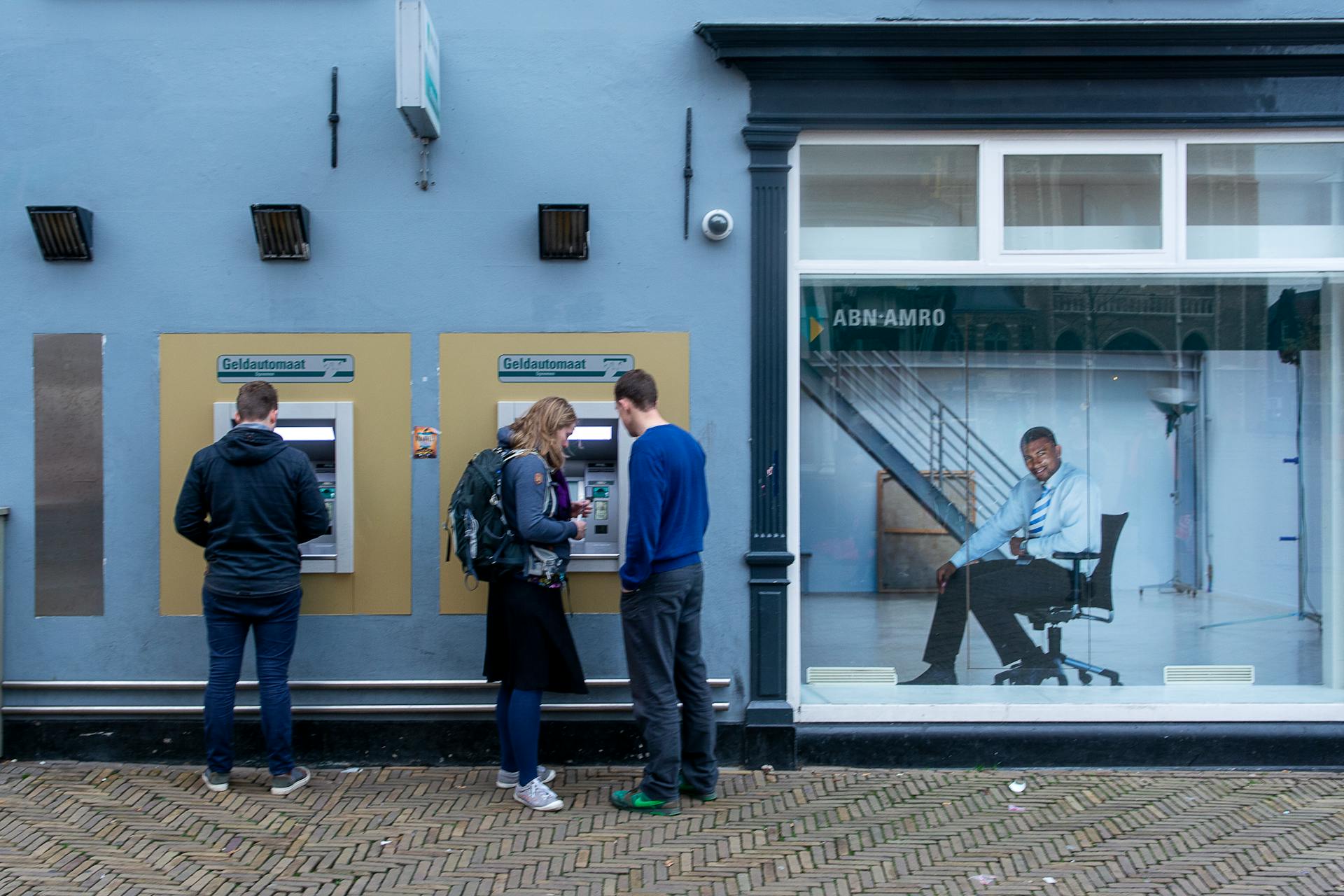
Banks use a combination of factors to price commercial loans for small businesses, including loan size, loan term, and the business's credit history.
A bank's loan pricing model is based on the risk of lending to a particular business.
The loan-to-value ratio is also a key factor in determining the interest rate on a commercial loan.
Banks typically charge higher interest rates for loans with shorter repayment terms.
The interest rate on a commercial loan can also be influenced by the type of collateral offered by the business.
On a similar theme: Interest Only Commercial Loans
Common Eligibility Criteria
To qualify for a commercial loan, you'll need to meet certain eligibility criteria set by lenders. These criteria vary from lender to lender, but there are some common factors they look for.
A good credit score is essential, with many lenders requiring scores above 650. However, some lenders offer bad credit business loans for those with lower scores.
A well-structured business plan is also crucial, showcasing your business strategy, market analysis, and financial projections. This helps lenders assess your business's future profitability and ability to pay the loan.
For more insights, see: Business Loans 3 Month Bank Statements
Your business's annual revenue is another key factor, with higher revenues improving your chances of loan approval and potentially securing better loan terms.
Many lenders prefer to work with companies that have been in business for at least two years, as a longer track record reduces lending risk. However, some lenders offer startup funding for new businesses.
Here are the common eligibility criteria:
- Personal and business credit scores
- Time in business
- Annual revenue
- Down payment and/or collateral (in some cases)
These criteria are in place to help lenders assess the risk of lending to your business. By meeting these requirements, you'll be more likely to qualify for a commercial loan.
Loan Pricing Models
In the world of commercial lending, banks use various pricing models to determine the interest rates they charge borrowers. The simple cost-plus approach is no longer effective due to intense competition from other financial institutions.
Banks have shifted towards a price-leadership model, where a prime or base rate is established by major banks and serves as a benchmark for other types of loans. This rate is crucial in establishing a competitive pricing structure.
To maintain a competitive edge, banks must keep their funding and operating costs, as well as risk premium, as low as possible. This involves finding ways to decrease costs and determine the risk premium based on the borrower's characteristics and the loan itself.
Broaden your view: Union Bank Housing Loan Interest Rate
What Factors Determine?
Commercial loan interest rates are determined by a complex calculator that incorporates multiple variables. The calculator takes into account the funding cost incurred by the bank to raise funds to lend, which can come from customer deposits or various money markets.
The operating costs of servicing the loan are also a factor, including application and payment processing, as well as the bank's wages, salaries, and occupancy expense. A risk premium is added to compensate the bank for the degree of default risk inherent in the loan request.
A profit margin is also included to provide the bank with an adequate return on its capital. This profit margin can be influenced by competition from other lenders, and banks often use a price-leadership model to establish the cost of credit.
In the price-leadership model, a prime or base rate is established by major banks and is the rate of interest charged to a bank's most creditworthy customers on short-term working capital loans. This rate serves as a benchmark for many other types of loans.
Curious to learn more? Check out: Current Prime Rate for Commercial Loans
Here are the four components of the cost-plus loan-pricing model:
- Funding cost: the cost of raising funds to lend
- Operating costs: the costs of servicing the loan, including application and payment processing
- Risk premium: the premium added to compensate the bank for the degree of default risk
- Profit margin: the profit margin added to provide the bank with an adequate return on its capital
These components are used to calculate the interest rate on a loan, and the specific rates can vary depending on the lender and the loan terms.
Fixed vs. Variable
Fixed interest rates remain constant throughout the loan term, providing predictability and stability in monthly payments. This makes it easier for businesses to budget and plan their finances.
One of the advantages of fixed rates is that they don't change, even if market rates drop. However, this can also mean that borrowers with fixed rates don't benefit from lower interest rates.
Fixed rates can be initially higher than variable rates, but they offer stability and predictability. For example, a $500,000 loan with a 5-year term and a fixed interest rate of 5% has a monthly payment of $9,434 and total interest paid of $66,035.
Variable interest rates, on the other hand, can fluctuate based on changes in an underlying benchmark rate. This means that the rate can increase or decrease during the loan term, affecting the monthly payment and overall interest costs.
Here's an interesting read: Truist Bank Personal Loan Rates
Variable rates can start lower than fixed rates, but they also carry the risk of increasing over time. If market rates drop, borrowers with variable rates may benefit from lower interest payments.
Here's a comparison of fixed and variable rates:
Variable rates can be beneficial if you expect interest rates to decline or remain stable. However, if rates increase, borrowers with variable rates may end up paying more in interest over the life of the loan.
Discover more: Commercial Loans Interest Rates History Chart
Negotiate Whenever Possible
As a business leader, you know how critical it is to negotiate, even in circumstances that may appear clear cut. Find evidence of what metrics determine the company's prime rate, then provide evidence of how closely you match that profile.
You can provide documentation of your creditworthiness and ask your lender to reconsider if they don't want to approve your requested loan amount. This will help them identify what rates you are entitled to.
Showing proof of what other lenders have been willing to offer you can also help your lender understand what rates you deserve.
Small Business Management
As a small business owner, managing your finances is crucial to securing the best loan options. You can make a more informed decision by understanding the variables that affect your interest rate on a loan.
To improve your financial health, approach the loan application process holistically. This means seeking areas of improvement in your financial management to qualify for the best interest rates.
Using specialized tools can help you manage your business credit and qualify for better loan options. These tools can also help you track your financial progress over time.
By taking control of your finances, you can secure the best loan option possible for your small business.
A fresh viewpoint: Best Commercial Property Loans
Interest Rates and APR
Interest rates and APR are two key concepts to understand when it comes to commercial loans. The interest rate is the cost of borrowing the principal loan amount, expressed as a percentage.
A $500,000 loan with a 5% interest rate, for instance, has a straightforward cost. The APR, on the other hand, includes the interest rate as well as other fees and costs associated with the loan.
Consider a $500,000 loan with a 5% interest rate and $10,000 in fees. The APR would include both the interest rate and the fees, resulting in a higher percentage than the nominal interest rate alone.
To compare loans, it's essential to identify all costs, including origination fees, closing costs, prepayment penalties, and any other charges. The APR standardizes the cost of borrowing across different loans, making it easier to compare the total costs.
Here's a quick comparison of interest rates and APRs:
By considering the APR, businesses can make more informed comparisons between different loan options and avoid hidden costs.
For more insights, see: D C B Bank Share Price
Market and Economic Factors
Market and economic factors play a significant role in determining commercial loan rates. Private money lenders use a complex calculator that incorporates multiple variables, including market interest rates, to identify the interest rate they're willing to provide.
Interest rates in the real estate market overall influence rates for all borrowers. A commercial real estate loan tends to be several points above that for a residential conventional mortgage.
Recommended read: Uco Bank Share Market Price
Loans with variable rates may be quite low in the beginning but rise with market conditions. Understanding the potential changes in market conditions is crucial to decide whether it's a good time to borrow.
Economic conditions, such as market interest rates, inflation, and economic stability, significantly impact commercial loan interest rates. Here are some key factors that lenders consider:
In summary, understanding the market and economic factors that influence commercial loan rates is essential for businesses to prepare for the borrowing process and negotiate favorable terms.
Improving Creditworthiness
Improving creditworthiness is crucial for small business owners who want to secure a good interest rate on their commercial loan. A good credit score can save you thousands of dollars in interest payments over the life of the loan.
A higher credit score indicates lower risk to the lender, often resulting in lower interest rates. Conversely, a lower credit score can lead to higher rates due to perceived higher risk.
To improve your credit score, you should check your personal and business credit reports for places you can improve your scores. Incurring less debt and paying off credit card balances are a few ways to do this.
Paying off outstanding debt and reconciling late payments can also improve your credit score. This shows lenders that you're financially responsible and reliable.
A strong credit history with timely repayments and low outstanding debt is essential for lenders to assess your risk profile. This can lead to lower interest rates and better loan terms.
Here are some key factors that lenders consider when evaluating creditworthiness:
- Credit Score: A higher credit score indicates lower risk to the lender, often resulting in lower interest rates.
- Credit History: A strong credit history with timely repayments and low outstanding debt indicates financial responsibility and reliability.
- Debt-to-Income Ratio: A lower ratio suggests better financial health and a higher capacity to repay the loan, potentially leading to lower interest rates.
Loan Terms and Conditions
Loan terms can significantly impact the interest rate you'll qualify for. Longer loan terms typically result in better rates, as the total interest paid over time is larger for the lender.
Bridge loans, however, have a maximum term of 36 months and come with very high interest rates. You'll need to pay the full loan amount by the end of the term, known as a balloon payment.
The length of the loan term is a crucial factor in determining the interest rate, and lenders often adjust their rates accordingly.
Consider reading: Terms for Commercial Real Estate Loans
Choosing a Lender
Choosing a lender is a crucial step in securing a commercial loan. The right lender can make all the difference in getting the best terms and rates for your business.
Commercial loan terms can be either short-term or long-term, depending on the loan type and purpose. Longer terms usually mean lower monthly payments but more interest paid over the life of the loan.
To compare different lenders, consider the following metrics: terms, rates, fees, and funding time. Some lenders may offer same-day funding, while others may take a few days or even weeks to fund your loan request.
Business loan interest rates can vary according to market rates and the lender's estimation of your creditworthiness. Factors like creditworthiness, loan amount, and the economic environment influence rates.
Some lenders may also charge a factor rate instead of simple interest. Lenders can charge various fees, including origination fees, legal fees, appraisal fees, prepayment penalties, and late payment fees.
To compare loan offers, you can either go directly to lenders and get quotes through each website or use a loan marketplace like LendingTree to get multiple quotes at once. Be sure to look at the loan terms holistically rather than just focusing on the interest rate.
Different lenders have varying levels of risk tolerance, which can impact interest rates. Some may offer competitive rates to attract more borrowers, while others might set higher rates to mitigate risk.
To secure the best rate, shop around and compare offers from multiple lenders. Demonstrating loyalty and financial reliability can be advantageous during negotiations.
Here's a summary of the key factors to consider when choosing a lender:
- Terms: Short-term or long-term, depending on the loan type and purpose
- Rates: Fixed or variable, influenced by creditworthiness, loan amount, and economic environment
- Fees: Origination fees, legal fees, appraisal fees, prepayment penalties, and late payment fees
- Funding time: Same-day funding, a few days, or weeks
Sources
- https://www.lendingtree.com/business/commercial-real-estate-loans/
- https://www.visiolending.com/blog/how-are-commercial-loan-rates-determined
- https://www.minneapolisfed.org/article/2000/how-do-lenders-set-interest-rates-on-loans
- https://www.nationalbusinesscapital.com/blog/commercial-loan-interest-rates-how-are-they-calculated/
- https://www.biz2credit.com/term-loan/the-definitive-guide-to-business-loan-interest-rates
Featured Images: pexels.com


